“If I only had one citrus tree to live on for my entire life, this is it,” said our guide through the collection of about 1,000 varieties of citrus selected from around the world. That’s quite a claim. But, coming from Ottillia “Toots” Bier, we would be wise to consider it. She has tasted the fruit of hundreds of citrus trees; I’d guess she has experience with as many types of citrus as anyone on the planet.
We were at a Gold Nugget mandarin tree in the Citrus Variety Collection at the University of California, Riverside. This was the middle of March, 2012. This was my first time tasting a Gold Nugget mandarin.
I was sufficiently impressed to plant my own Gold Nugget tree, from which my family has eaten a few hundred mandarins during this March, 2020.
Let me tell you more about the fruit and the tree of this variety of mandarin called Gold Nugget in order to help you decide if it is worth planting in your yard.
The Fruit
Compared to other mandarins, Gold Nuggets are medium size — bigger than Kishu or Tango, smaller than Shasta Gold or Shiranui. The name Gold Nugget comes from the appearance of the fruit’s rind, which is bumpy and ribbed. Unlike some other mandarins, Gold Nuggets do not have a nipple at the stem end where the fruit attaches to the tree.
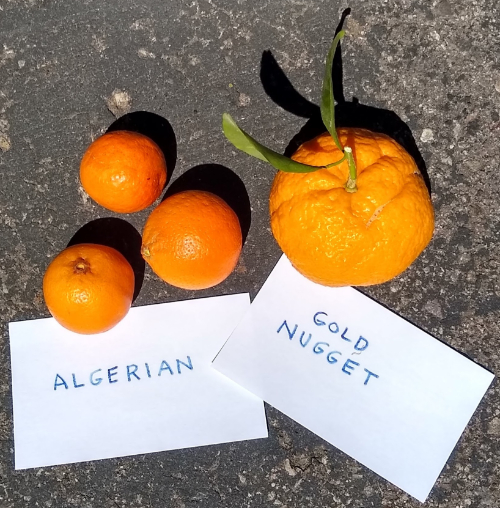
Once Gold Nuggets are mature, you can easily peel them with a single corkscrew motion, popping the pith at the core out of the bottom.
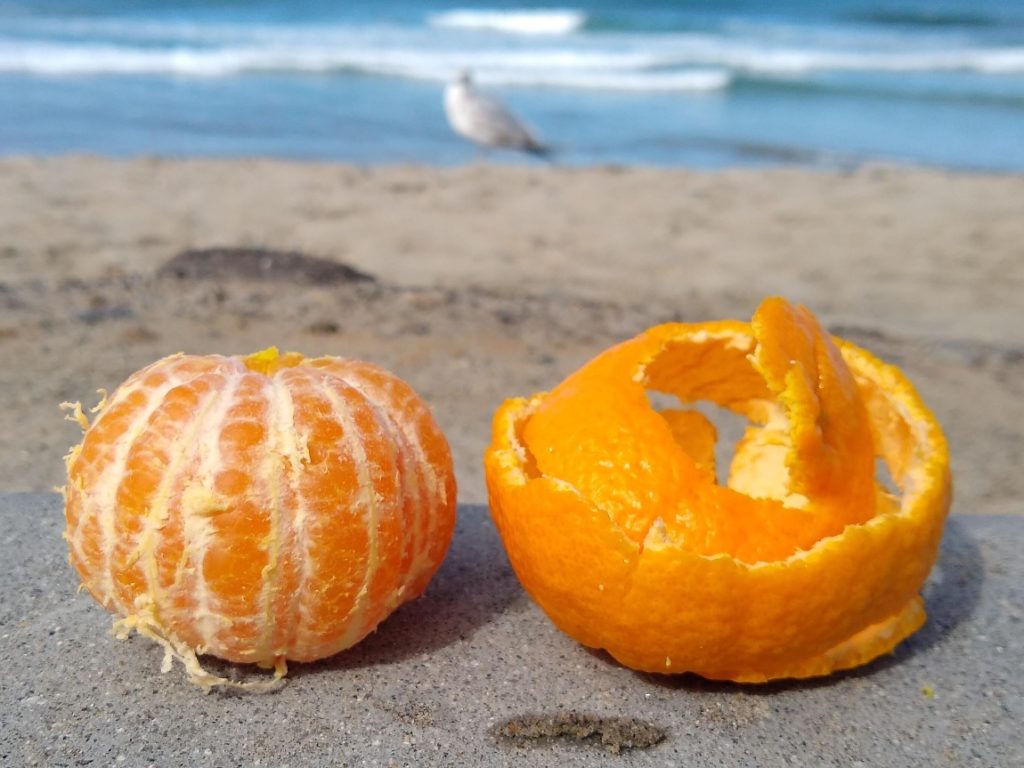
You would find Kishu or Satsuma mandarins even easier to peel than Gold Nuggets, but Gold Nuggets peel easily enough that my two-year-old daughter doesn’t ask me for help.
As you peel, Gold Nuggets release heaps of aroma and oil from the rind. It’s an intoxicating smell, but it does make your hands messier than with some other mandarins whose peels come off more dryly.
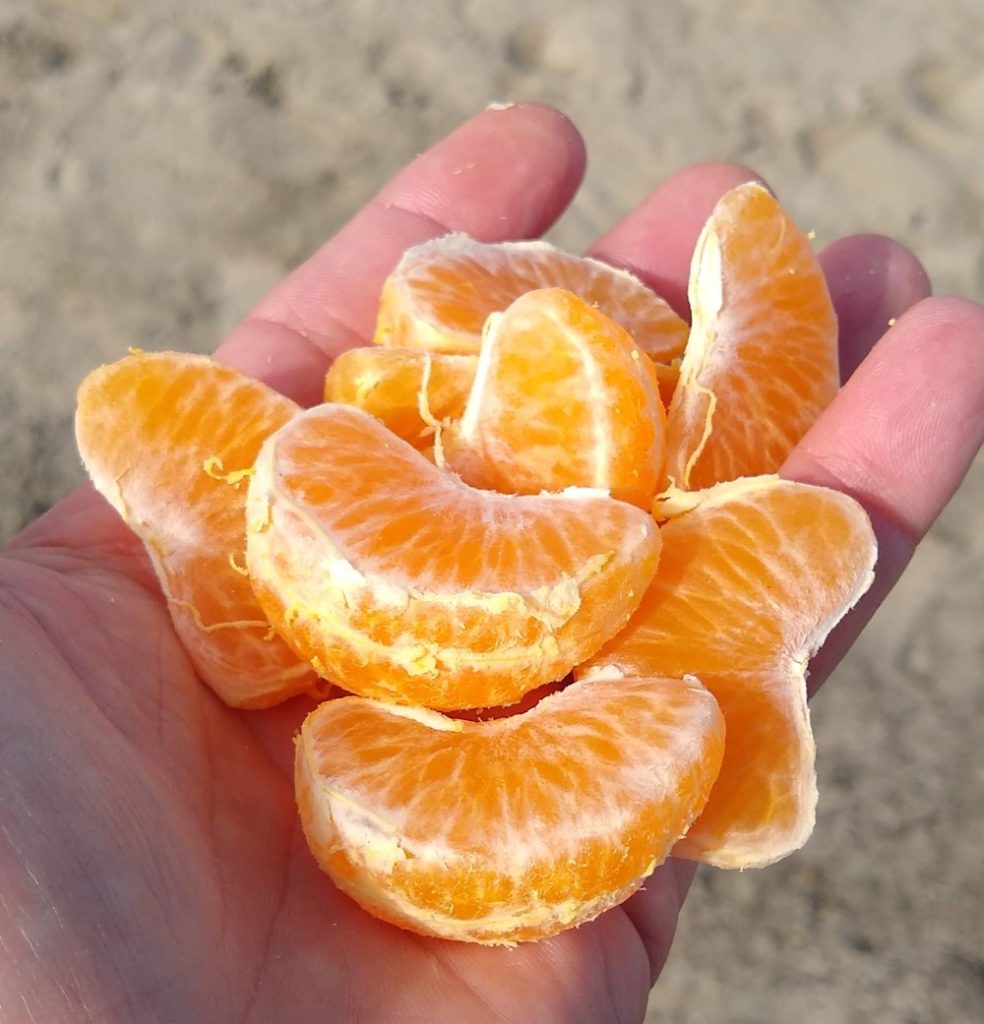
The segments of Gold Nuggets are easily separated, seedless and firm, bursting with juice. The flavor is rich but mostly sweet; it does not have the tang associated with some other mandarins such as Dancy.
The Tree
Vigorous is the word that comes to mind when I think of a Gold Nugget tree. Mine was planted at the same time as some of my other citrus trees and it is on the same rootstock and yet it has grown a bit faster.
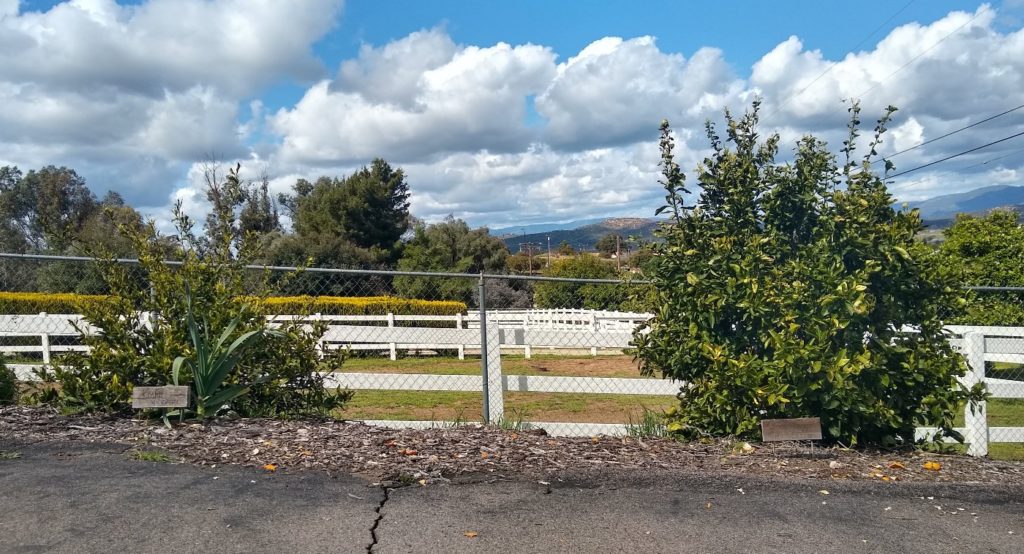
This might be in part due to the fact that its fruiting has alternated. Here in 2020 we are finishing eating a few hundred Gold Nugget mandarins from the five-year-old, five-foot-tall tree, but in 2019 it produced only three, three lonely pieces of fruit. The year prior, it had an abundance of fruit. Here it was in that year, 2018, three years after planting from a five-gallon container:
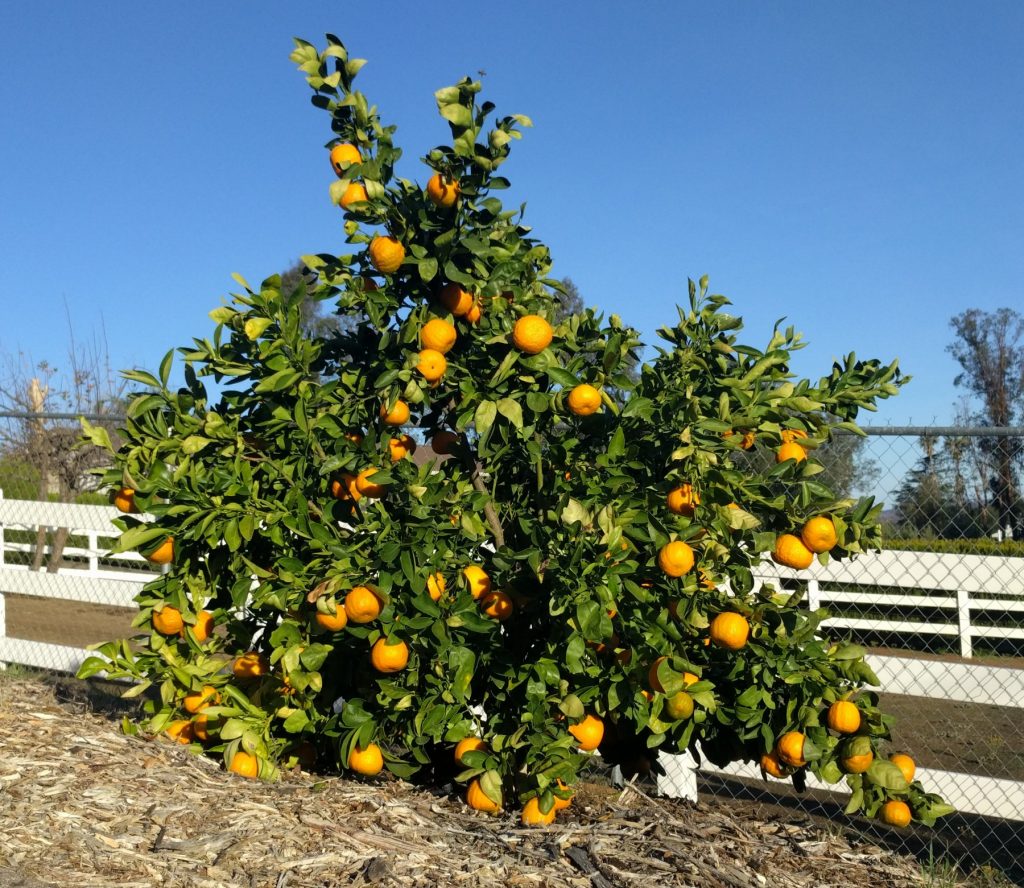
Farmers don’t like that Gold Nugget trees tend to alternate bear, and I imagine some home growers wouldn’t like this either. I don’t mind because I have other mandarin trees whose harvest season is at about the same time, such as Pixie. But if you are looking for a mandarin that produces fruit more evenly through the years, then Gold Nugget might not be your best bet although many mandarins alternate to a degree.
It is said, however, that the alternate bearing of Gold Nugget can be moderated through pruning.
Variety Development
We call Gold Nugget a mandarin, but technically it is a mandarin hybrid, as it has some orange in its lineage. In the 1950s, citrus breeders at University of California, Riverside crossed the Wilking mandarin with the Kincy mandarin, and both of those mandarins are actually mandarin hybrids. Wilking and Kincy both have King tangor as a parent, a tangor being a cross between a mandarin (tangerine) and an orange.
(Read more about Gold Nugget’s development here and here.)
Harvest season
Here in March is only the beginning of the Gold Nugget harvest season. We are in inland San Diego County, and our Gold Nuggets start to taste good and peel well from March. (This is late compared to most other mandarin varieties, some of which mature as early as November.) Gold Nuggets will continue to sweeten and peel even more easily through spring and into summer.
For how long can Gold Nuggets hang on the tree and maintain quality? I’ve eaten some from a tree in Valley Center in San Diego County in September that were still very good. Toots said that she has picked fruit from her own tree in her Huntington Beach yard in October that was still “sound and good.” That Gold Nuggets store so well on the tree was a major reason that Toots called it her number one citrus (the other major reason being its outstanding flavor).
From my own tree, the latest I’ve had good ones is the end of August, but they taste their best around May and June. Only a few remain on my tree that long though. My routine is to give my kids the green light to pick Gold Nuggets at the end of February. This is how the tree looked soon after I let them at it this year:
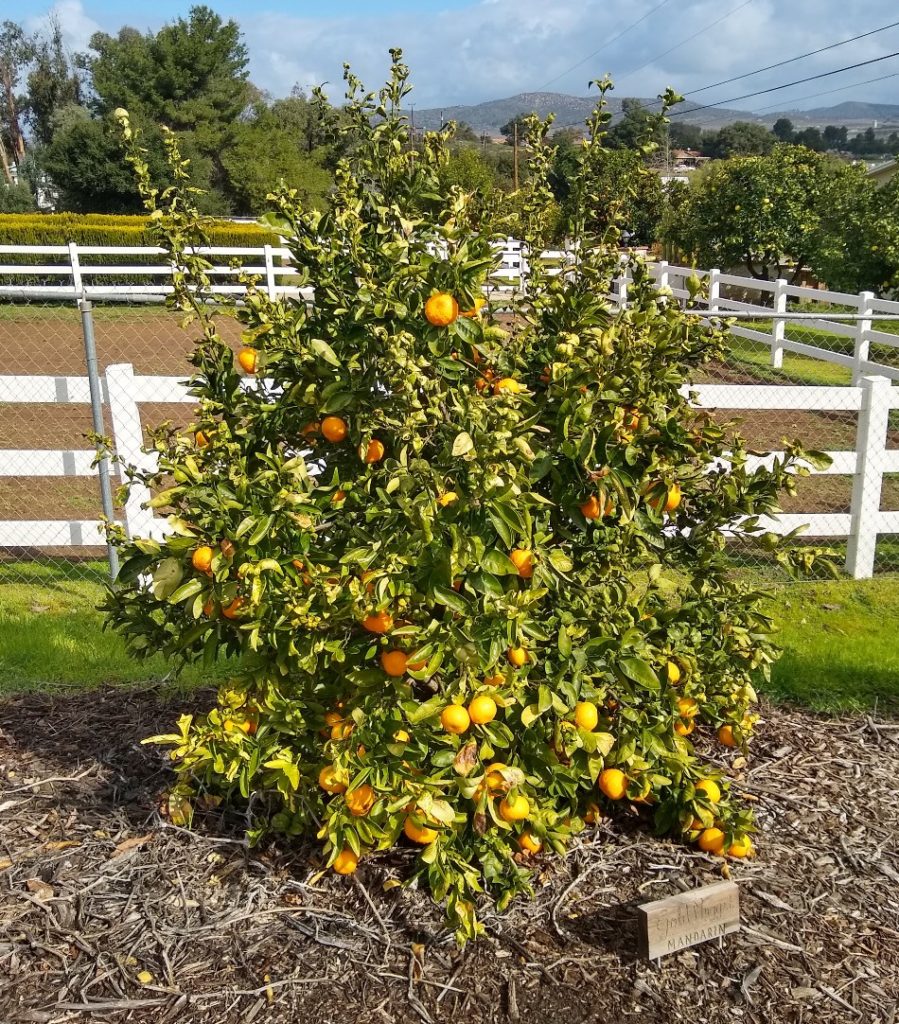
Here is how it looked yesterday, March 26, 2020:
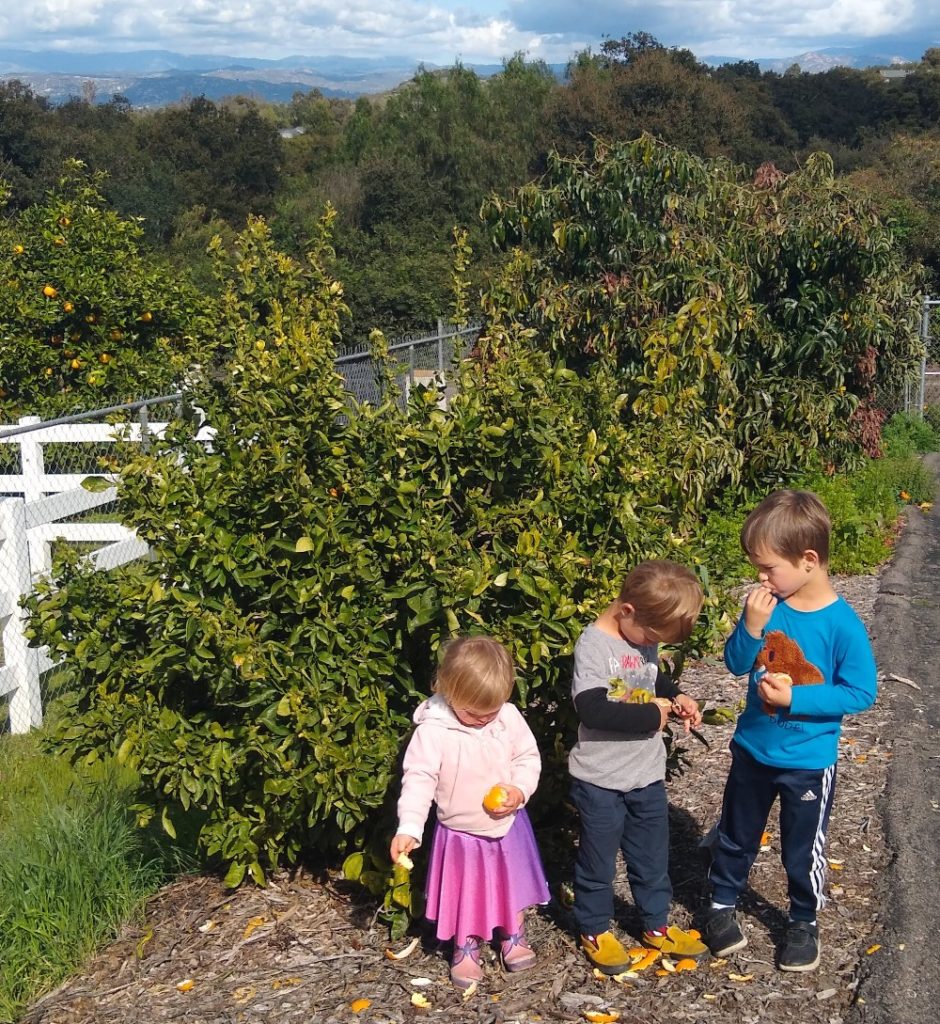
They wiped out a few hundred mandarins in a month. Okay, my wife and I ate quite a few too.
Here is a video profile of Gold Nugget:
Here is a video of parts of that 2012 Tour of the Citrus Variety Collection at UC Riverside (we arrive at the Gold Nugget tree at minute 42):
If you’re interested in buying a Gold Nugget mandarin tree, they are widely available at retail nurseries and garden centers throughout California. Also, Four Winds Growers carries them and can ship one to your door.
A list with links to all of my Yard Posts is HERE.

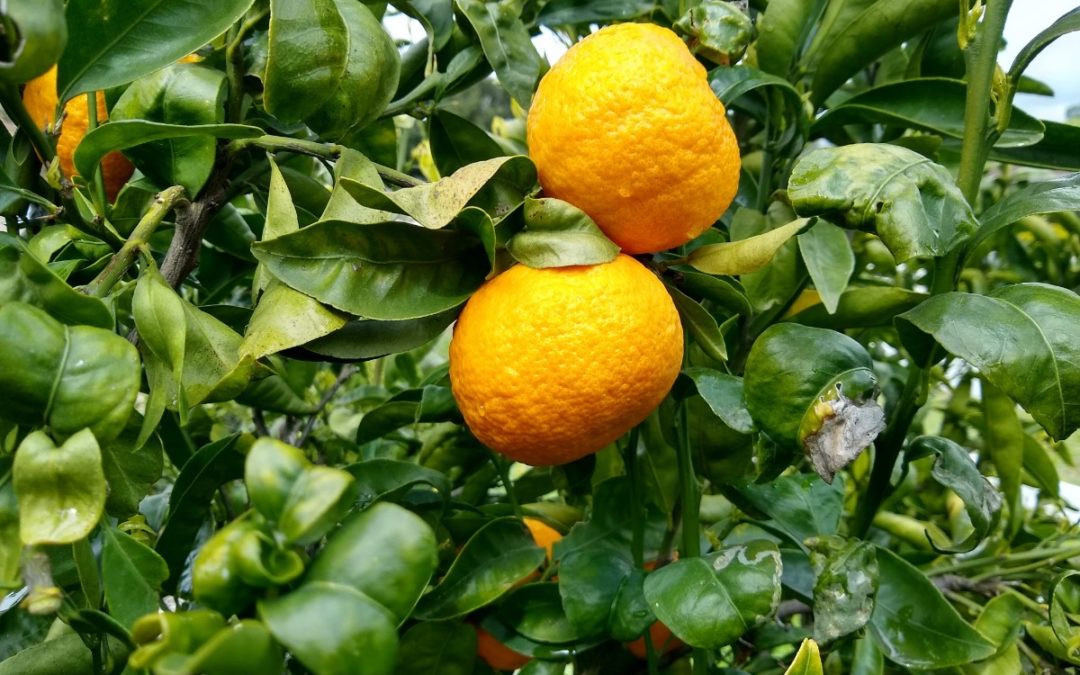


I bought some Gold Nuggets from Sprouts the other day and was my first time trying. My wife and I both loved them and they were very easy to peel. I skipped over this one from the CCCP when grafting my Citrus cocktail tree this spring (Accidentally knocked off my Oro Blanco Graft I put last October during the process, It was growing branches already, Darn it for not being careful!!!).
I’m going to get some of these gold nuggets from the CCCP and graft them on two different large root suckers I have left. Thanks for the post, I was having a hard time chosing a nice Mandarin that is sweet and peels easy, now my choice is made. Thanks
I was mistaken, I thought I saw Gold Nugget on CCCP website, but it was Honey Mandarin. Bummer……
Hi James,
Too bad. I believe the reason Gold Nugget budwood is not available from CCPP is because it is still under patent.
But the good news is that Gold Nugget trees are widely available since both Durling and La Verne nurseries grow them. You should be able to find a tree to buy or order from almost any retail nursery. Also, Four Winds Growers carries Gold Nugget so you could have one shipped to your door from them.
Thanks, Found one 15 gallon at Louie’s Nursery today in Riverside, picked it up this morning going in the ground this weekend!
That was fast!
Hi Greg
I have an ojai pixie in a container. I would like to plant another mandarin tree in the ground that would produce fruit during months that the pixie is not producing. I read your kids love kishu, I don’t have kids, would you still recommend the kishu or a different variety? I live in zone 10. Looking for seedless and easy to peel.
Thanks
Hi Jay,
To complement your Pixie, you might choose a Kishu or Satsuma (both of which are seedless and easy to peel, in addition to having an earlier harvest than Pixie).
Satsumas are bigger than Kishus, and they have larger juice vesicles. Satsumas are more of a type of mandarin than a specific variety, but they all taste about the same to me. I have Owari and Xie Shan. There are many others. Some people rate them as the best tasting of all mandarins.
Kishus are very small, the smallest mandarins I know. This annoys some people. I don’t mind because they’re so easy (and clean) to peel that I can harvest, peel, and eat four in the amount of time I can harvest, peel, and eat one other larger mandarin (most of which don’t peel as easily or cleanly as Kishu). Plus, if I want a quick, tiny snack, then I pick just one. Large mandarins like Shiranui or Shasta Gold are sometimes more than I want at one moment. It’s personal preference.
I have 2 Golden Nugget Trees planted them 13 yrs ago, in 2 very different locations. They were in 10gal cans. And one had some good size tangeries on it. That tree continued to bear xlnt delicious fruit, until 2yrs ago. Then all the tangerines were very tasteless, & very dry & fibrous. (We had over 30inches of rain that previous year)..Yet my other Golden Nugget tree in a different location had hundreds of tangerines & are always delicious. This year the fibrous tree had xlnt sweet & juicy fruit.
My other tree reached 22′ ft in height & with an 8ft spread. & a few branches cracked last year & split.. which I removed. And the heavy bearer & grower is in a more shaded area, & gets mostly just morning sun. And I love that the tangerines when picked can last months in the refrigerator. I bought these trees at Sperling Nursery which sadly closed 7 yrs ago located in Calabasas CA (8 miles from my house) Most of their trees & shrubs came from Monrovia Nursery in Monrovia CA. And my Golden Nuggets were from.Monrovia Nursery. My smaller Golden Nugget has very low branches, & I was able to get smaller low branches to root, by scatching the low branch with a knife & burying it in the soil.. & keeping it wet. In a few wks I had roots coming from the scratched area under the soil. And let it grow awhile before cutting the branch from the main tree. This always works with fig trees, & many other trees, & plants for me. And I expected it would work with my Citrus trees too. Which proved it did. 😃
We have a honey and a satsuma mandarin here and they’re both really good. I’ve seen the gold nugget for sale all the time. Maybe I should consider putting a graft on one of my trees. I’m guessing the patent has expired. My two cents: the best citrus in our yard is hands down the lavender gem tangelo (and we have some really tasty citrus here)
Hi Bob,
What is a Lavendar Gem tangelo? I’ve never heard of it, but even the name is very enticing.
I understand it’s a cross between something mostly grapefruit and some tangerine or something like that. I don’t use this word ever, but I would describe its flavor as exquisite. It peels easily, very reddish, juicy and tastes absolutely great (lots of seeds but they remove well). We eat it directly or use it as a 50/50 mix with tequila. It’s grafted onto my Marsh grapefruit tree along with a Cocktail grapefruit so we’ve aptly name that tree the tequila tree. I can’t find pictures of the fruit on my phone but I bet my wife or kids have one. I’ll send you that if I find it.
That’s the best name for such a tree: The Tequila Tree! Look forward to finding out more about Lavendar Gem. I’ve been enjoying juicing the Cocktail grapefruit from my neighbor’s tree the past few weeks — tastes so good it seems artificial.
i got one a few years back. it was starting to produce a couple of fruits but was still in a pot. then that summer heatwave of 2018 hit it and fried it pretty good but it was still alive. i put it into the ground in feb of 2019 and over a year later..it literally has not grown or lost any leaves. i compared before/after pics and it looks like i bought a plastic plant.
i’m not sure what the cause of this is…is it far too damage from the heat? it’s properly mulched and water on a timer and i’ve given it a bit of fertilizer but held off thinking it was pretty stress. i’m almost to the point where i might just dig it back up and replace with another one at this rate.
Just a guess, circling roots.
Planted a fish tail palm years ago, it did nothing for ten years.
Dug it up and put in a 5 gal bucket to sell it, started to grow new fronds.
Hi Johnny,
Bummer about your tree. Dennis has a good guess there. In the past, I’ve removed a couple young citrus trees that didn’t grow and found that both had circling roots near the crown; they seemed to be girdling each other and preventing the tree from thriving.
I think your idea of replacing the tree is the best solution regardless of the cause.
Hi Greg,
My golden nugget has been in the ground (and out of the 5 gallon container) for about 3 years now. It’s about 8 feet tall, and at present covered in hundreds of flowers. I notice that many of the flowers appear to have been pollinated as I can see the tiny fruits attached. That said, I feel like most all of the fruits aren’t getting bigger and some may even dry out an fall off. Any ideas why that might be? I do apply a citrus fertilizer 4 times a year (Down to Earth) brand. Thanks!
Hi Andy,
Nothing sounds wrong with your tree. Some flowers become fruit and some don’t. Only if it has many flowers yet few fruit result should we worry.
I have 6 gold nugget trees. They do alternate bear. I got one tree from Home Depot and the rest from Evergreen Nursery. May 15, 2015 I went on an Alaskan cruise leaving from Seattle. I went to the market there and what did I see? Gold Nuggets. I bought about 10 and after the cruise I wanted to get more heading home, but didn’t have the time to go to the big market there. Once you start eating these you can’t get enough. I have 3 Tahoe Gold tangerine trees. It is the best of the Gold series, the other 2 being the Yosemite Gold (2nd best), and the Shasta Gold. The Tahoe Gold were early this year – they don’t peal easy, but the fragrance is bold and amazing as is the taste and sweetness – these are the juiciest of any citrus. Pealing it leaves your hands smelling like tangerines for hours. I can’t pick a best because of varying qualities, but everyone should have Gold Nugget and Tahoe Gold. Then add Pixie and the others that Greg mentioned if you have room.
Thanks for that, Richard. I too can’t pick a best mandarin, but I would hate to give up my Gold Nugget. Six Gold Nugget trees! That is a testimony right there.
With multiple gold nugget trees and they alternate bear can you force them to alternate different from each other so each year you have some?
Hi Jason,
Yes. You can also train an individual tree to alternate bear in different halves of its canopy.
Hi,
I think my gold nugget either has a disease or a deficiency or something, because many of the early new leaves were super pale, curled, and some developed a white area along each side of the central vein. Can anyone help with a possible diagnosis?
The tree was only just planted by a gardener in early September 2019, so it has yet to have any flowers or fruit. I am in North San Diego County, about 2 miles from the coast.
Thanks for any advice! I would like to share a picture, but I don’t see where to do that.
Hi Heather,
I’d wait a couple months to get worried about your Gold Nugget tree. New citrus leaves always look somewhat pale when they first emerge, and on some varieties they are very pale. My Gold Nugget’s new leaves are tiny and yellow right now. If they are still yellow instead of lime green when they reach full size, then worry.
Sometimes aphids infest new citrus leaves and cause them to curl. Uncurl leaves to check if there are tiny bugs inside.
OK, thank you Greg! I will keep an eye on it. I did find a few aphids, but most of the curled leaves did not have them. I’ll see what happens over the next few months.
Thanks,
-Heather
Damn I was excited because I’m in the market for another citrus tree… turns out all the blooms on my mandarin fell off and only about 2 fruit are forming. Time for a new tree but that alternate bearing issue is a deal breaker. Guess I’ll be getting that Satsuma Owari unless you have any other suggestions? Want a nice sweet mandarin that’s seedless.
Hope you and yours are healthy and safe and hunkered down enjoying your garden in spring. I finally put my Fruit Punch Mango planted in a raised mound. It’s already pushing new growth and I have a new bee colony after the last one I had was abandoned.
Hi Zen,
There are so many sweet mandarins that are seedless. Satsumas are one, and Kishu, Pixie, USDA 88-2, Tango, and more.
Same to you. This is a nice time of year to be hunkered down, if we have to.
Honey mandarin is pretty good. You often find them on fruit cocktail trees with lemons, oranges, etc. Also, the satsuma is considered a very early citrus (or late depending on the metric). Ours is near SDSU and comes in around November or so. I think if we were in a hotter area it would be ready in October or September.
I would so like to join you citrus growers! Unfortunately, the only available land is a hillside that is covered in ivy. I have cleared ivy in one semi-level area about 6’x6’, digging out ivy roots to about 12-14”. I can’t clear much further due to grade and property line constraints. Knowing ivy’s tenacity, I suspect it will keep coming back. Is there any way to eradicate it without harming the soil for a citrus tree? Alternately, is it feasible to plant a citrus and then just try to pull any ivy that reappears or will the ivy compete too much with the citrus for soil nutrients?
Thanks for feedback.
I have a steep hillside and have to keep the ivy to prevent erosion. I dug holes and planted my trees in 50/50 enriched soil and I use a plastic edging on the level edge. I let the ivy grow around the edging and weed wack it a couple times a year and use a hedge trimmer on the ivy that grows over the upper edge. Use wood bark chip mulch in the 24″ or larger circle the tree is planted in. Also, install a watering system on automatic because if you let it dry out 1 time the tree is history. The ivy is only a problem if you let it over grow for a long time.
I live in Riverside. My husband and I bought our Gold Nugget at a local nursery as soon as they were released. In the past 3 to 4 years I noticed large round shaped fruit full of seeds that would fall off before ripening. I was told that was from the rootstock as the branches had long thorns. We pruned a large section of the inside of the tree that contained these branches. My tree is actively bearing fruit and it is ripening here in December.
Hi Michelle,
Glad you caught the rootstock and removed it. Reminds me to poke into the canopies of my trees to check for rootstock. Think I’ll do that today.
We have a “Gold Nugget Mandarin” in a half barrel, when is the best time to move it either to a new barrel or just plant it in the ground.
Hi Albert,
I’d do that work any day of the year, unless your yard typically gets to the mid or low 20s in the winter. I’ve done such transplanting of citrus in the dead of winter and at the height of summer. Both work fine, as does any time in between. I planted my own Gold Nugget in the middle of January in 2015.
I sometimes say that around May is the best time to plant or transplant citrus just because the tree will immediately start growing and that can be satisfying to watch, but any other time is fine too.
I have a golden nugget in the Phoenix area. Planted a year ago and seems to have curly leaves. Is this normal or does it require more water than typical citrus? Thanks
Hi Ryan,
I have always watered my Gold Nugget the same as all other adjacent citrus so I don’t think it has different needs. Gold Nuggets do have curly (kind of ugly) leaves, naturally. Every one I’ve seen in different climates has it.
I bought a gold nugget from sloats nursery about 1.5 months ago and it says it’s on standard rootstock. I couldn’t see an obvious graft point but it just looks like a small rooted branch. Is that normal? It also hasn’t produced any new growth or looks any different from when I first bought it! Should I be worried?
Hi Regina,
It’s possible that the tree was budded (grafted) so well that the union isn’t easy to spot, but usually you can find some swelling or line on the trunk.
I don’t know for sure about the Bay Area, but down here Gold Nuggets (and citrus generally) are blooming and flushing new leaves right now. I guess it’s possible that your tree has already finished. Do you see any tiny fruitlets on it? Do the leaves look green and healthy? If so, then I wouldn’t worry.
Greg,
Can I buy a few scions from your golden nugget? I would like to graft them on to my existing mandarin tree.
Thanks,
Tony Cipponeri
Hi Tony,
You can get budwood for Gold Nugget from the Citrus Clonal Protection Program: https://ccpp.ucr.edu/onlineOrdersV2/
That’s the smartest, safest, and only legal way to get such citrus budwood these days. One of the main reasons to use this source is because their trees are tested and known to not be infected with HLB or other citrus diseases. I’ve ordered many scions from the program myself; it’s easy, reliable, and reasonably priced.
Hi, I also had success with the Gold Nugget tree, it is a strong grower and I like the fruit very much. But one tree I always wanted in addition was the Satsuma. I tried different trees but they always struggle at my place in hotter inland. Their worst time is October and November then they look very droopy. There is a lot of die-back and trees overall stay very small. Extra water, fertilizer, insecticide, or fungicide don’t seem to help. Is this strange, especially compared to other trees doing fine? Is it time to accept the incompatibility and to give up? I hope somebody has advice, thank you, Kay
Hi Kay,
It’s just Satsuma trees that grow poorly? I know that Satsumas can grow very well with inland heat. They do fine at my place and in Riverside, for example. It might have been the particular trees (circling roots in the pot can be an issue) or it might have been the particular spot in which you planted them (shallow soil or poor drainage or something else).
thanks, good to know that inland heat is not a problem. I kept searching and think I found a new fungus in SoCal can be the reason. It is called ‘Colletotrichum’ and causes dieback. It will fit the symptoms (still funny that the Gold Nugget tree seems fine). I tried fungicides before because I suspected Phytophthora, but they didn’t help. Now I will try again with different ones.
To celebrate buying our 1st home, in Los Angeles, I ordered a golden nugget sapling from four winds in FL. It’s been a year, and I put a ground collar around it to water and fertilize. It had some small fragrant buds last year, but no real fruit. This year, it developed a bunch of chartreuse leaves (not the dark green it started with) that have just fallen off, and now it looks like large twig. What did I do wrong? That part of the yard gets less sun in the winter, but could that cause complete failure?
Hi Khymn,
Sorry to hear about this. Sounds like possible overwatering. Right now is when the tree should be growing new leaves (chartreuse colored at first) and blooming. Lack of sun isn’t ideal but shouldn’t cause total failure; lack of sun could contribute to overwatering though, as the tree has less need for water compared to a full sun location.
I have room for one citrus tree, and would like a sweet, seedless and easy to peel mandarin. Which variety would you recommend? Thanks!
Hi Judy,
What a fun question! There are actually many good options to choose from. I think you would be happy with any of the following varieties which all satisfy those criteria: Gold Nugget, Tango, Kishu (very small fruit), Gold Series (Tahoe Gold, Yosemite Gold, Shasta Gold — all of which have big fruit), Pixie, Satsuma (Owari is most common), USDA 88-2 (also called Lee x Nova, Supernova, Superna).
My personal favorites are the Kishu for early season, and the Gold Nugget for late season.
You can source most of these varieties at Four Winds Growers or ask your local nursery for a supplier.
Hello,
I have been trying to purchase Golden nugget trees (or seeds) and can not find any place that carries or sells them. I am in Fallbrook CA. Any ideas?
Todd, did you have any luck locating a Gold Nugget tree? I’m looking for a late season citrus to complement my Lee x Nova. If I do not have any luck with the Gold Nugget search, I may look at Satsuma, Sumo, Tahoe OR Shasta Gold varieties.
Walter Anderson in Poway has some Gold Nugget trees. I just bought my first one yesterday.
Got one of them too from Poway today!! Thanks, Helen, for comment. 🙂
Hi Greg, thanks for the wonderful information on the gold nugget, we just planted one! Would love to know where to get a Pixie tangerine tree if you would share how you came to have yours. Thanks!
Hi Randy,
Thank you. La Verne Nursery (wholesale) makes Pixie tangerine trees for retail nurseries all over Southern California. You can go to your local nursery and ask them to order one from La Verne for you if they don’t have any in stock.
Hey Greg,
I just bought a 5 gal Gold Nugget from Walter Andersen. It looks like a whip with little side branching and a lollipop of leaves on top. It says it is a standard tree, but I have read your blog for a long time and know that means trained for a central leader. How can I force lower branching? I am pretty sure it is on Carrizo rootstock. I also picked the tree with the most side branching from what they had. Any advise to make it short and bushy? Thanks.
Hi Dan,
All they do to make those “standard” trees is cut off all the side branching down low, but if you do nothing you will probably get some new growth on that lower trunk, which you can allow to grow. That’s what I would do: nothing and wait. But I would also be sure that the bare trunk doesn’t get sunburned in the meantime. Protect it with a wrap (I often use shade cloth) or white latex paint or something similar.
You could make a heading cut on the tree to try to force low branching, but I wouldn’t do that. Then you’d be dealing with a bare stick and you’d have to be careful not to overwater it and protect it from the sun, and you risk the little guy just dying instead of regrowing.
Hi Greg,
Thank you SOOO much for this detailed post. I have a Gold Nugget for 12 years but it’s been moved twice because soils in my yard are terribly clayey. The tree never flowers or bears fruit. It does have few branches with green leaves which tells me it’s still alive. I moved it to a 20 gallon wooden planter box this morning which means it’s the 3rd time it’s been moved. What can I do to make sure it grows & bears fruit? Reading your post give me hope this tree can thrive if I give it more care.